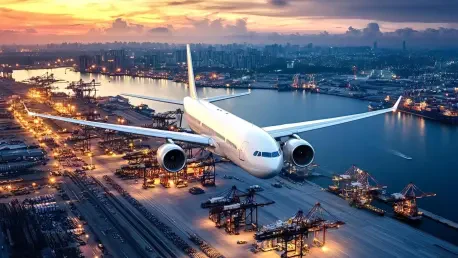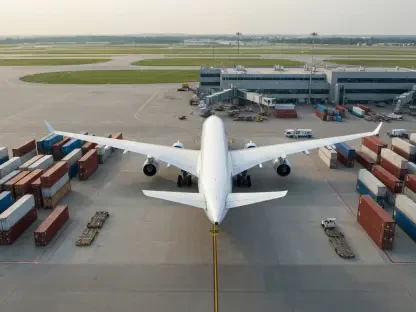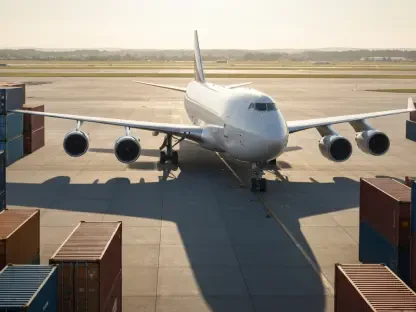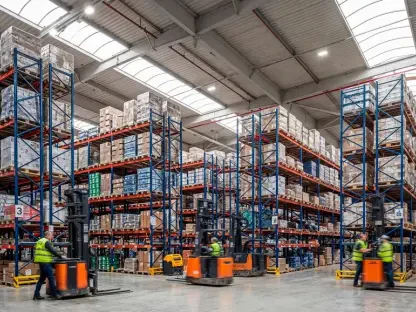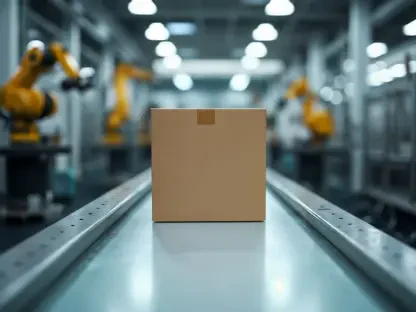Rohit Laila, a seasoned expert in logistics and transportation, brings a wealth of experience to the table. With a keen eye on innovation and technology, he offers insightful perspectives on how advancements in infrastructure and operations can bring transformative changes to the industry. Today, Rohit shares his thoughts on DHL Express’s latest move at Lyon-Saint Exupéry Airport, a significant investment aiming to bolster logistics operations in France.
What inspired DHL Express to open a new multi-service site at Lyon-Saint Exupéry Airport?
The decision to open a multi-service site at Lyon-Saint Exupéry Airport was driven by the need to cater to the increasing demand for efficient logistics solutions. The airport’s strategic location and the escalating demand for robust international shipment facilities were pivotal factors. DHL recognized the necessity to enhance capabilities in this region to maintain pace with global logistics trends.
Can you elaborate on how this new facility is different from previous ones in France?
This facility marks a notable step forward as it is the first of its kind in France to offer integrated solutions for both Time Definite International (TDI) and Day Definite International (DDI) shipments. The direct runway access and advanced technology aspects set it apart, allowing seamless handling of parcels that enhances both efficiency and speed of operations.
How does the investment of €121 million (US$140 million) reflect DHL’s commitment to its operations in France?
Investing €121 million underscores DHL’s strong commitment to solidifying its position in France. This significant financial commitment is not just about expanding capacity but is also about ensuring that we cater to our clients with the highest level of service, which reflects our long-term strategy to remain competitive and responsive to growing demands.
What are Time Definite International (TDI) and Day Definite International (DDI) shipments, and why are they important for this facility?
TDI shipments are designed to be delivered at a definitive time, ensuring critical deliveries happen when they are needed internationally. DDI shipments, on the other hand, promise delivery on a specified day but are less time-sensitive. Both options are crucial as they offer flexibility to diverse customer needs, which this facility is tailored to address.
How will direct runway access enhance the efficiency of handling international, European, national, and local parcels?
Direct runway access is a game-changer. It decreases the transfer time between inbound flights and delivery networks, thus enhancing operational efficiency. This access streamlines movement, reduces delays, and optimizes the logistics workflow, serving both regional and local delivery needs more effectively.
Why was Lyon-Saint Exupéry Airport chosen as the location for this new hub?
Lyon-Saint Exupéry Airport was an ideal choice due to its strategic position in the European logistics map. It offers connectivity and is favorable for handling volumes that are seen in both national and international scales. The logistics infrastructure and potential for growth in this region made it the perfect choice for our new hub.
What specific customer demands does this new hub aim to meet?
The hub caters to a broad spectrum of customer demands, from urgent international deliveries to less time-sensitive local shipments. Efficiency and speed are of essence, and customers can now expect improved service that separately targets diverse needs, timing precision, and reliable delivery assurance.
You mentioned a 15% growth in activities over the past five years. What factors contributed to this growth?
Several factors have contributed to this growth, including increased e-commerce activities and globalization, which have inherently raised demand for rapid and reliable logistics services. Additionally, restructuring our service offerings and enhancing our technological capabilities have helped us navigate and capitalize on this growth effectively.
What improvements in parcel processing capabilities are expected with the new site?
The new site will enable handling of 17,500 parcels per hour, a significant jump from earlier capacities. Enhanced sorting systems and automation reduce handling times, minimize errors, and improve throughput, ensuring swift and reliable processing.
How does this facility optimize parcel management and workplace comfort?
Integration of state-of-the-art equipment reduces the physical strain on workers and streamlines parcel handling. Moreover, ergonomic design and technological advances have been instituted to boost workplace comfort, allowing efficient operations without compromising employee well-being.
Can you discuss the environmental features integrated into this new hub?
The hub incorporates several eco-friendly features, such as energy-efficient lighting, rainwater harvesting systems, and better temperature management solutions like fast-opening dock doors to retain internal climate. These efforts contribute to drastically reducing the site’s carbon footprint and align with our long-term environmental goals.
How does this facility align with DHL Group’s goal of achieving zero emissions by 2050?
Each element of this facility is crafted with an environmental perspective. From energy performance improvement to electric vehicle charging stations, these features are directly in line with our 2050 zero-emissions vision. We aim to continually expand our green footprint in operational practices, setting benchmarks for sustainable logistics.
How does this development fit into DHL’s broader European network strategy?
Strategically, strengthening our infrastructure in key locations like Lyon aligns with enhancing our European network resilience and efficiency. This hub acts as a vital node in our logistical map, ensuring enhanced capabilities and allowing for a more fluid flow of goods across the continent.
Are there future expansion plans for this hub to accommodate increasing global flows?
Certainly, expansion is in our trajectory, driven by anticipated growth in global logistics demands. Our technological and spatial provisions have been designed to be scalable, allowing for future enhancements to accommodate greater volumes and more complex logistics requirements.
How does this site improve the average processing time by 60 minutes?
This improvement is largely due to technology-driven solutions that optimize sorting processes, reducing manual handling and fostering quicker transitions through our logistics chain. The combination of automation and streamlined workflows plays a critical role in accelerating parcel processing times.
Why is France considered a key country in DHL’s European network?
France’s pivotal geographic location, coupled with its mature market and robust infrastructure, make it integral to our network. Its attractiveness lies in its ability to support substantial logistical operations catering to both intra-European and global routes effectively.
What are some challenges the new facility aims to address, especially during peak seasons like the holidays?
During peak seasons, the demand spike poses logistical challenges. This facility is equipped to handle increased volumes with improved processing capabilities, ensuring that we meet seasonal surges efficiently without compromising service quality or timing.
Can you provide details on the state-of-the-art equipment used at the new site?
Our facility boasts cutting-edge sorting systems and automation tools that improve precision in parcel handling and sorting. Reduction in manual interventions, optimized routes, and enhanced workflow efficiency is achieved through these advancements, embodying the sophistication of our operations.
How will DHL Express ensure continued excellent service with this new facility?
With proactive management, technological compatibility, and strategic operational practices, we are dedicated to maintaining excellence. Customer satisfaction remains paramount, and the facility’s advancements are pivotal in upholding our service standards in alignment with evolving demands.
What are your thoughts on the investment of more than €500 million in the Middle East operations and how it relates to the company’s European strategy?
This substantial investment reflects DHL’s ambition to strengthen its market presence globally. The Middle Eastern focus complements our European strategic initiatives by enhancing connectivity and establishing robust logistics networks across regions, ensuring we maximize efficiency and reach worldwide.
What is your forecast for the logistics industry in the near future?
The logistics industry is poised for transformative growth in the coming years, driven by technological advancements and increased connectivity. Innovations in sustainable practices, AI and machine learning, and real-time tracking will redefine operational landscapes, creating opportunities and setting new industry standards globally.
